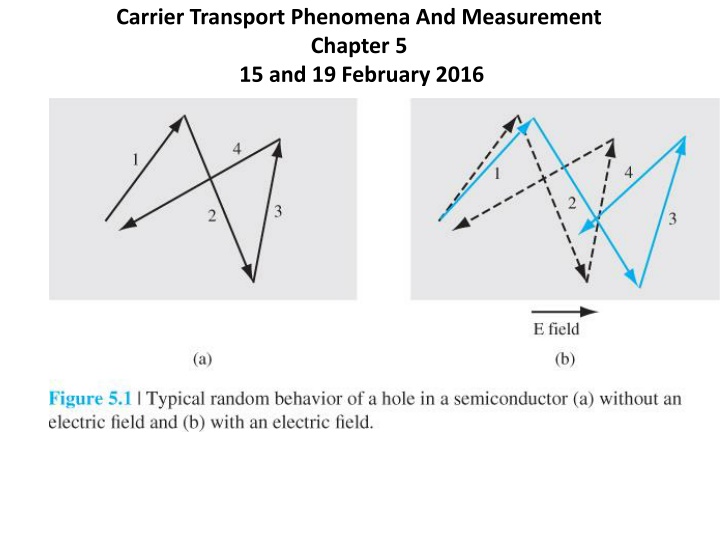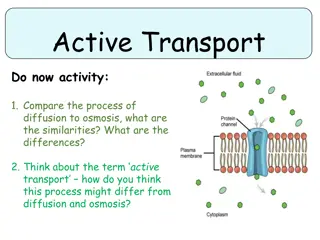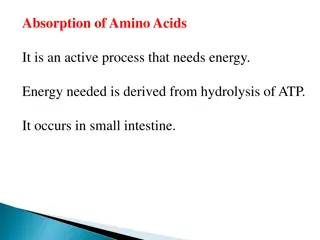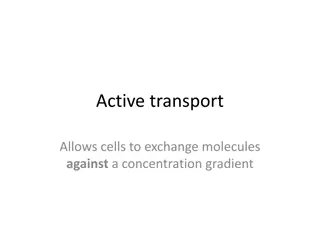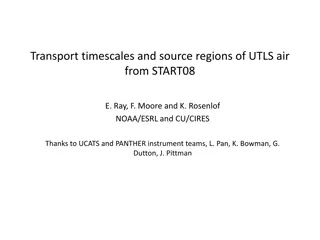Carrier Transport Phenomena and Measurement Insights
Uncover the intricacies of carrier transport phenomena and measurement techniques in semiconductors. Explore topics such as carrier drift, mobility, conductivity, resistivity, and more. Understand the behavior of excess carriers in non-equilibrium conditions in semiconductors.
Download Presentation

Please find below an Image/Link to download the presentation.
The content on the website is provided AS IS for your information and personal use only. It may not be sold, licensed, or shared on other websites without obtaining consent from the author.If you encounter any issues during the download, it is possible that the publisher has removed the file from their server.
You are allowed to download the files provided on this website for personal or commercial use, subject to the condition that they are used lawfully. All files are the property of their respective owners.
The content on the website is provided AS IS for your information and personal use only. It may not be sold, licensed, or shared on other websites without obtaining consent from the author.
E N D
Presentation Transcript
Carrier Transport Phenomena And Measurement Chapter 5 15 and 19 February 2016
Carrier Drift Observe that the text uses e instead of q as a symbol for a unit of charge v J = Drift current density drift d Current density due to the holes = = ep J Charge density: v E Drift velocity of holes dp p = ep E Current density due to the holes p p drif t Current density due to the electrons = en Charge density: = v E Drift velocity of electrons dn n = e + J J en p ( E n n drif t = ) n E Total drift current density drift p n 2 2
Definition of Carrier Mobility Mobility: relates the average drift velocity of a carrier to the electric field = = v v E Drift velocity of holes dp p E Drift velocity of electrons dn n : mobility of holes p : mobility of electrons n 3 3
Conductivity = + = ( ) J e p n E E drift p n = 1 + ( ) e p n 1 Conductivity: p n ( -cm)-1 = = ( -cm)-1 + Resistivity: ( ) e p n p n = + = + ( ) ( ) e p n en Intrinsic semiconductor: p n i p n = + ( p ) e ( p n en ep eN eN N-type semiconductor: p n ) n d n = + e n P-type semiconductor: p n p a p 9 9
Resistance = J E I I V L L J = = = = = V I I RI A A L A A V E = L L L = = R A A 11 11
Non-equilibrium Excess Carriers in Semiconductors (Chapter 6) When external field (electric, thermal, optical) is applied on the semiconductor, the semiconductor is operating under non-equilibrium conditions Excess electrons in the conduction band and excess holes in the valence band may exist in addition to the thermal equilibrium condition Excess carriers movements: generation, recombination, drift, and diffusion 14 14
Total Diffusion Current Hole diffusion current dp = J eD Dp: hole diffusion coefficient (m2/s) , px dif p dx Electron diffusion current dn = J eD Dn: electron diffusion coefficient (m2/s) , nx dif n dx Total diffusion current dn dp = ( ) J e D D dif n p dx dx 15 15
Low-Level Injection and High-Level Injection Low-level injection: excess carrier concentration is much less than thermal equilibrium majority carrier concentrations n-type material: no>>po, n(t) <<no p-type material: po>>no, n(t)<<po High-level injection: excess carrier concentration is comparable to or greater than the thermal equilibrium majority carrier concentrations n-type material: no >> po, n(t) >= no p-type material: po >>no, n(t)>= po 16 16
Carrier Generation and Recombination Mechanisms of generation and recombination: band-to-band, traps (recombination centers) 18 18
Excess Carrier Generation and Recombination When external force (electric, optical, thermal) is applied, excess electrons and holes are create in pairs n p = g g With generation of excess carriers, concentration of electrons and holes are increased = + = + n n n p p p 0 0 Electrons and holes are recombined at the same time of generation are equal n p = R R 19
Carrier Generation and Recombination in Equilibrium (Band-to-Band) For direct band-to-band generation, the electrons and holes are created in pairs G G = 0 0 n p For direct band-to-band recombination, the electrons and holes are combined in pairs R = R 0 0 n p In thermal equilibrium, the generation and recombination rates are equal = = = G G R R 0 0 0 0 n p n p 20 20
